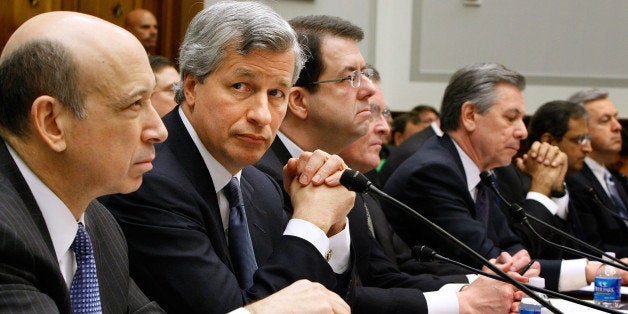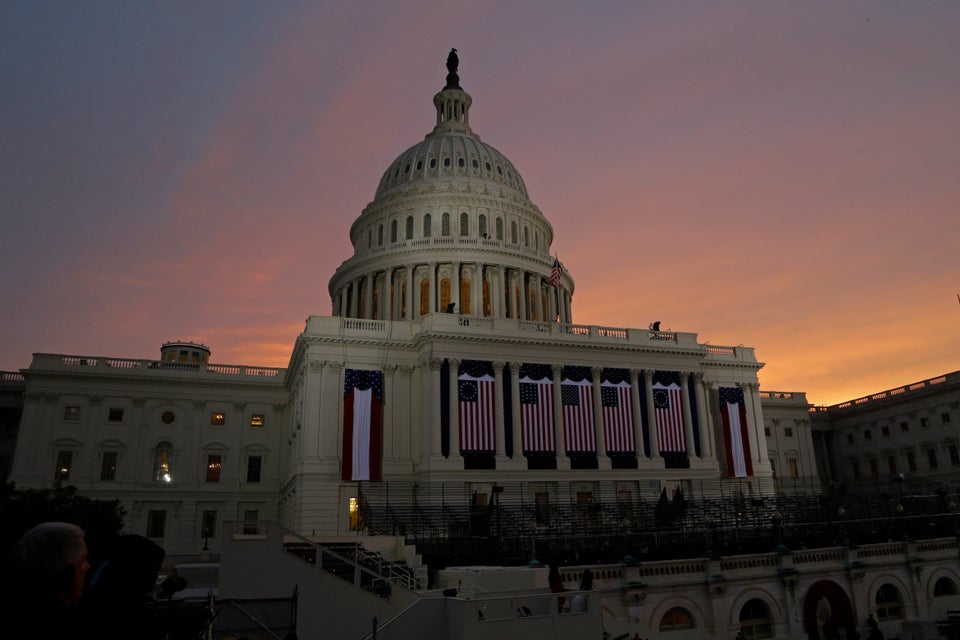
Some of the biggest U.S. banks think they’d fare much better in a severe economic downturn than the Federal Reserve forecasts. Their executives and shareholders -- and the American public that subsidizes them -- will find out Wednesday after U.S. markets close whether their main regulator intends to do anything about it.
Since the financial crisis, the Fed has been “stress testing” the biggest banks in the U.S. by annually estimating their revenues, losses, profits and key measures of their financial health in a world in which stock markets plunge, unemployment spikes and the economy tanks. After bank regulators failed to anticipate or prevent the financial crisis, the stress tests are supposed to help the Fed better supervise the nation’s leading banks. The banks are required to run their own internal tests as part of an effort to bolster their own risk management.
The results are important: Banks that fall short of the Fed’s expectations are limited in how much of their annual profits they’re allowed to return to shareholders. Paying dividends and buying back stock boost share prices. Analysts at Goldman Sachs estimate that 24 of the banks involved in this year’s stress test will dole out nearly $100 billion in dividends and stock buybacks over the next five quarters, or about two-thirds of their net profit over the same period.
But the banks are generally much more optimistic than the Fed, and divergences between what the banks think would happen versus what the Fed reckons could be a sign the banks aren’t properly modeling their potential fortunes, raising questions about their ability to manage themselves. The Fed, in turn, could limit their ability to reward their shareholders with a slice of their profits.
Mike Mayo, a longtime bank analyst who now works at financial firm CLSA, calls it one of “the great mysteries of the bank stress test world.”
“I think we have the Bermuda Triangle, the Loch Ness Monster, and the gap in the stress test results between the banks and the Fed,” Mayo said.
Last week’s stress test results revealed that Wells Fargo, the most valuable U.S. bank, would suffer 86 percent fewer losses during a hypothetical recession than envisioned by the Fed -- the biggest gap between the Fed’s projections and any of the six biggest U.S. banks by assets. Goldman Sachs, the leading Wall Street bank, believes a core measure of its financial health would be 60 percent higher than the Fed projects. JPMorgan Chase, the biggest U.S. bank by assets, estimates its revenues would be 63 percent higher than the Fed does.
In the past, the Fed has rebuked banks for deficiencies in their stress testing and plans for distributing profits to shareholders. Fed officials view the stress test as an opportunity to measure banks’ ability to manage their own risks.
For example, in 2013 the Fed criticized JPMorgan and Goldman for “weaknesses” in their procedures, focusing on the discrepancies between their internal stress test results and the Fed’s. Their share price fell in the hours after the results were announced.
Eric Kollig of the Fed, Joseph Evangelisti of JPMorgan, and David Wells of Goldman all declined to comment on the gaps between the banks’ results and the Fed’s. Mary Eshet of Wells Fargo said, “We cannot comment on how the Federal Reserve determined results, but we are pleased that under our and the Federal Reserve's calculations all capital ratios are more than 200 basis points above minimum requirements.”
Wells Fargo, long viewed as one of the strongest and most conservative U.S. banks, was perhaps the most optimistic of the six biggest U.S. banks about its potential losses in the event of a severe recession.
The bank said a key gauge of its financial health -- the Tier 1 leverage ratio, an indication of how much of its balance sheet is funded by equity versus borrowed money -- would be 39 percent higher than the Fed forecasts, the biggest gap among the largest U.S. banks. Wells Fargo also said losses from soured loans would be 47 percent less than the Fed envisions.
“It caught us a little bit by surprise because Wells Fargo has been the poster child for success,” said Christopher Mutascio, an analyst at Keefe, Bruyette & Woods who covers banks for investors. Mutascio said Wells Fargo typically tries to return 55-75 percent of its annual profits to investors, and this year he expected Wells to be near 75 percent.
“I do question our expectations about going to the high end of the range based on the variances we saw between Wells Fargo’s results and the Fed’s,” Mutascio said, though he added he doesn’t expect Wells Fargo to fail the Fed’s test.
The first round of results, released last week, examined how the banks would fare assuming they maintained their recent dividends. Later Wednesday, the Fed will announce a second round of results, this time taking into account how much cash the banks hope to send their shareholders over the next five quarters.
Banks and their defenders have argued that the Fed is opaque about the stress test -- some call it a "black box" -- so it would be natural for the banks and the Fed to have different results.
But there’s another view, which is that large gaps in the results could be a warning about a bank’s ability to properly account for the various risks it would face were unemployment to spike or a big bank to fail. Over the past few years, the Fed has steadily increased its expectations of banks that ask for its permission to dilute the strength of their balance sheets by sending profits to shareholders rather than building up their capital bases. It’s part of the Fed’s larger attempt to crack down on big banks, which banks argue has gone too far; reformers, meanwhile, say it hasn’t gone far enough.
“The point is: Are banks’ internal models substantial enough for the Fed? Are the ‘qualitative’ measures the Fed looks at up to snuff?” said Mutascio. “We just don’t know. There’s no rhyme or reason.”
